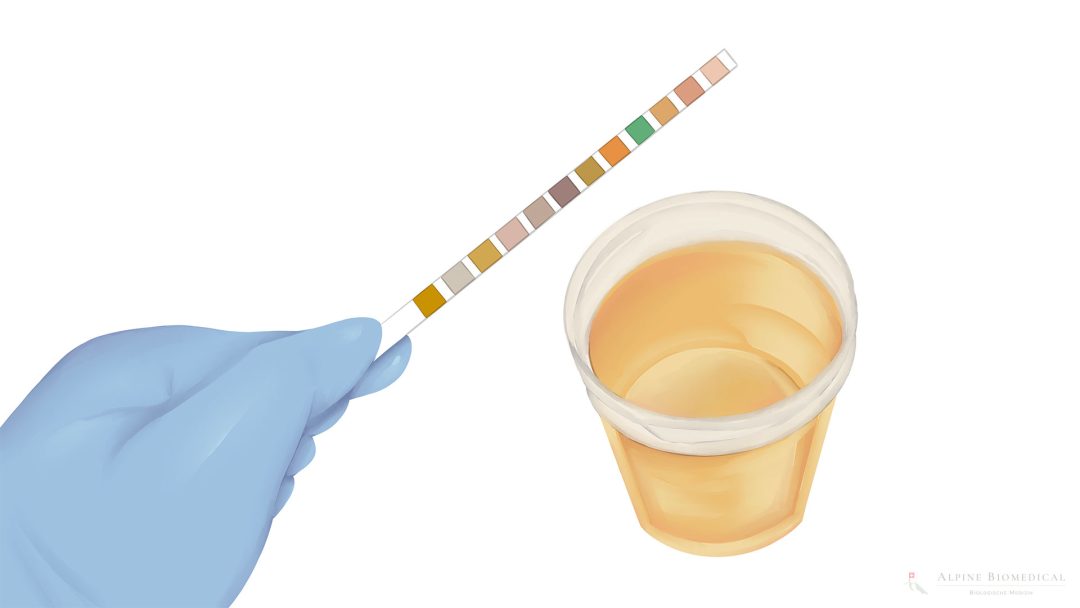Urinalysis

Urinalysis is part of laboratory diagnostics and describes the laboratory analysis of urine to obtain information about its composition. Many associate urinalysis with drug testing. However, urine analysis can reveal a lot of information about the patient’s health.
Urinalysis is particularly informative in cases of kidney and urinary tract diseases and can also be used in chronic poisonings. Urine can also be used to determine breakdown products of hormones, providing information about the patient’s hormone balance.
Organic acids in urine can be measured to obtain information about various metabolic processes, such as energy production in general, or carbohydrate and fat metabolism.
Furthermore, neurotransmitter balance can be assessed by measuring the breakdown products of individual neurotransmitters.
With the help of laboratory results, the therapist can gain important insights into the patient’s condition and adjust the treatment plan accordingly.
Med. pract. Dana Hreus M.A.
At Alpine BioMedical Clinic, we work with carefully selected laboratories that provide us with the necessary information for identifying the cause of the illness and the therapy.

Further information
Further information intended to give a better overview of the topic.